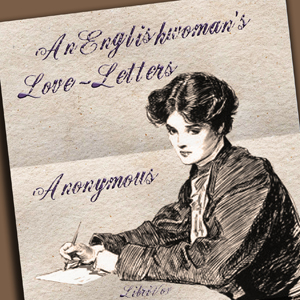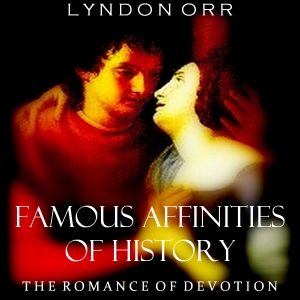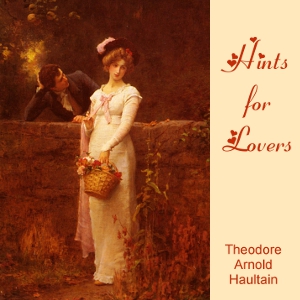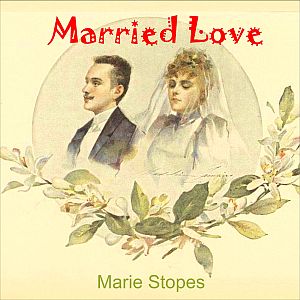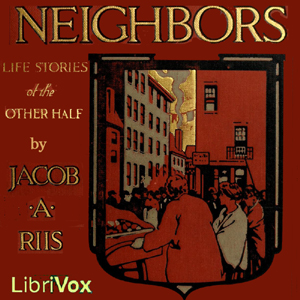- Marriage Instituted — Monogamy and Polygamy — Marriage among the Primitive Jews — Early Marriage — Days for Marriage — Parental Consent — Betrothal — Espousal Gifts — Hebrew Marriage, a Taking of the Woman — The Bride's Bath — The Dresses of the Bride and Bridegroom — The Wedding Festivities — Corn Symbol — Bridal Bower — Talmud Marriages — Divorce — A Brother's Widow — Shoe Symbol — Shoe Throwing — A Modern Jewish Marriage — The Wedding Girdle — The Nuptial Canopy — Egg Symbol — Wedding Dance — Evelyn at a Hebrew Marriage — The Taleth — Glasses Broken at Hebrew Weddings — Jewish Betrothal and Wedding Kings — The Wedding Ring of Joseph and Mary
- Cecrops and Marriage — Marriage among the Ancient Greeks — Celibacy Interdicted — Parental Authority — Professional Match-makers — Betrothal — Sacrifices to the Gods — Seasons for Marriage — The Moon and Marriage — Nuptial Bath — Ivy Symbol — Leading Home the Bride — The Arrival at the Bridegroom's House — The Wedding Feast and its Uses — The Epithalamium — Wedding Presents — Spartan Marriages — Capture of the Bride — Condition of Greek Wives — Marriage in Modern Greece — Nuptial Crown — Sieve Test of Virtue — Portion-money Worn on the Bride's Hair — Albanian Marriages — Rock of Fertility — Greek Church Marriages — Crowning Roman Marriages — Of three Kinds — Symbol of Capture — Divorce — Wife Tax — Betrothal — Ring Pledges — Marriage Days and Months — May Marriages Unlucky — Dress of the Bride — Confarreatio — Taking Home the Bride — Symbols — Threshold Omens — Etruscan Marriages — Syracusan Marriages
- Scythian Marriages — Lydian Marriages — Lycian Marriages — Rhodian Marriages — Parthian Marriages — Nestorian Marriages — Chaldean Marriages — Fire Custom — Assyrian Marriages — Babylonian Marriages — Women put up for Sale — Marriage at Nimroud — Coins stuck on the Bridegroom's Head — Egyptian Marriages — Copt Marriages — Moorish Marriages — Algerian Marriages — Morocco Marriages — Barbary Marriages — Arabian Marriages — Marriage for a Term — Wives in Common — Bedouin Marriages — Green Leaf Symbol — Marriages near Mount Sinai, — Wife-capturing — Wife-escaping — Marriages by the Medes — Persian Marriages — Marriage to the Dead — Marriage of a Persian Prince — Caubul Marriages — Wives lent — Sabean Marriages — Marriage in Georgia and Circassia — Sewing the Couple together — Sham Fights at Circassian Marriages — Armenian Marriages
- Chinese Marriages — Destiny — Match— makers — Fortune-tellers consulted — Omens — Betrothal Cards — Food Presents — Preparations for the Wedding — Cake Omens — Taking the Bride to the Bridegroom — Compulsory Marriage — Japanese Marriages — Bridal Torches — Marriages in India — Hindu Marriage Laws — Racshasa — Forms of Marriage — Brahmin Marriages — Omens — Sattis — Marriages at Goa — At Canara and Kunkan — Among the Konds — Wife— capture — Malabar Marriages — Marriages of the Nairs — Banian Marriages — Marriages at Bannaras — At the Maldive Islands and Cambay — At Ceylon — Siamese Marriages — Burmese Marriages — Bengal Marriages — Tonquin Marriages — Neilgherry Marriages — Wives lent — Mocha Marriages — Celebes Marriages — Amboina Marriages — Javanese Marriages — Symbols of Subjection — Maroon Marriages
- African Marriages — At Sierra Leone — Affiancing Custom — Moorish Marriages in Africa — Infant Betrothal — Cloth Symbol — Angola Marriages — Hottentot Marriages — Loango and Mpongme Marriages — Karague Marriages — Uganda Marriages — Congo Marriages — Experimental Marriages — Marriages in Canary Islands — Fattening for Marriages — Abyssinian Marriages — Guinea Marriages — Ethiopian Marriages — Mexican Marriages — Divination — Fire Symbols — Peruvian Marriages — Carib Marriages — Florida Marriages — Cuba Marriages — Brazilian Marriages — Child Wife — Stone— piercing — Guiana Marriages — Earning a Wife — South American Marriages — Wives on Trial — Patagonian Marriages — North American Marriages — Tarrying — Marriage en Chemise — Ring Signs — Australian Marriages — Wife-capture — The Trial of Spears
- Turkish Marriages — Russian Marriages — Hop and other Symbols — Peasants' Marriages on the Caspian and Black Seas — Marriage Fail — Tartar Marriages — Kalmuck Marriages — Wife-capture— Mongol Marriages — Marriage to the Dead — Ostiack Marriages — Toorkoman Marriages — Polish Marriages — Symbolical Bouquet — Hungarian Marriages — Marriages at Bosnia — In Wallachia and Moldavia — Scandinavian Marriages — Swedish and Danish Marriages — Superstitions and Charms — Norwegian Marriages — A Bryllup — Icelandic Marriages — Large Rings — Finland Marriages — Health — drinking — Knife Sign — The Week of the Breeches — Kamtchatkadale Marriages — Earning and Capturing a Wife — Lapland Marriages — Lovers' Wine — Esquimaux Marriages — Tibet Marriages — Brother's Wife — Marriages among the Dyaks of Borneo
- German Marriages — Wife— buying — The Morgengabe — Straw Symbols — Pay Weddings — Nuptial Medals — Silver and Golden Weddings — Morganatic Marriages — Marriages in Franconia — Prussian Marriages — Crockery thrown at Marriages — Marriage Trees — Swiss Marriages — Marriages in Holland — Friesland Marriages — The Bride— lifter — Marriages in France — Marriages at the Church Door — Money distributed at Marriages — Bride Favors — Knot— loosing — Infant Marriages — Nail— parings — Marriage by Proxy — Marriage under the Gallows — Marriage Portions in France — Marriage Brokers — Brittany Marriages — Belgium Marriages — A Flouncing in Guernsey — Italian Marriages — Roman Catholic Forms in Marriages — Blessing the Bed — Betrothal Pottery — Venetian Marriages — Genoese Marriages — Marriages at Elba — At Ragusa — In Dalmatia — Liburnian Marriages — Spanish Marriages — Wheat and Nut throwing
- Irish Marriages — Wife-seizing — The Agreement Bottle — Casting Darts — Horsing and Goaling — Changing Wives — Lending Wedding Rings — Scotch Marriages — Gretna Green — Banns Superstition — Unlucky Wedding Days — The Threshold — Money and Shoe throwing — Winning the Kail — Creeling the Bridegroom — The Deasuil — Highland Weddings — Bedding the Bride — Penny Weddings — Wedding Presents — Handfasting — Under the Apron String, — St Andrew and Marriages — Orcadian Marriages — Manx Marriages
- Welsh Marriages — Biddings — Bidding Letters — Purse and Girdle — Wedding Gifts — Bride Wains — Bride Ales — Bride Bushes — Bride Stakes — Racing at Welsh Weddings — Helen's Hunt — Riding for the Ribbon — Westmoreland Weddings — Bell Inscriptions — Quintain Sports at Weddings — Bundling — Chaining — Sanding — Marriage Tithes — Money given at Marriages in Wales — Wife-beating
- Marriage among the Early Christians — Marriage among the Ancient Britons — Marriage among the Anglo-Saxons — Marriage among the Anglo-Normans — The Power of Feudal Lords over their Wards — Infant Marriages — Betrothal Customs — The Nuptial Kiss — Breaking Money — Crooked Ninepence — Locks of Hair — Tokens of Engagement — Love Pledges
- Archeology of the Wedding Ring — First Use of Rings — Ring Finger — Betrothal Rings — Rings necessary in English Church Marriages — Objections to the Use of Wedding Rings — Substitutes for Rings — Gemmal Rings — Joint-ring Posies — Poetical Allusions to the Gemmal — Examples of Betrothal Rings — Examples of Wedding Rings — Royal Rings — Ring Posies — Rienzi's Wedding Ring — Rings given at Weddings — Rush Rings — Superstitions attaching to the Wedding Ring — The Ring and the Cake
- Prohibited Times for Marriage — Folk-lore on the Subject — Lucky and Unlucky Days — Hours for Marriage — Veils worn at Marriages — The Care Cloth — Crowning at Marriages — Ballad of “I'm to be Married o' Sunday” — Distribution of Money at Marriages — Money given to Priests — Nuptial Benediction — Mass and Communion at Marriages — Tapers at Marriages — The Nuptial Kiss — Wine and Sops at Marriages — Bridemaids and Bridemen — True-love Knots — Wedding Favors — Gloves at Weddings — The Brides's Garters and the Bridegroom's Points — Bride Laces — Wedding Shoes — Bride Knives — Bouquets at Weddings — Orange Blossom — Herb and Flower Strewing at Weddings — Rosemary and Bays at Weddings
- Music at Weddings — Musical Priest — Dancing at Weddings — Dancing the Bride to Bed — Money given to the Poor at Marriages — Bedding the Bride and Bridegroom — The Bride's Pins — Flinging the Stocking — Sack Posset Drinking — Benediction Posset — Sewing up the Bride in the Sheets — The Bride-cake — Divinations therewith — Riding for the Bride-cake — Foot-ball at Weddings — Presents by Masters to Servants at Marriage — Royal Gifts at Weddings — Meanness of Pepys
- The Banns — Fleet Marriages — Marriage by Licence — Marriage during the Commonwealth — Marriage proclaimed by the Bellman — Marriage Tax — Second Marriages — Persecutions of Persons Twice Married — Batchers' Serenade, — Instances of frequent Marriages — Marriage Toll — Brides' Seat — Parish Clerk's Responses — Wedding Psalm — Wedding Pies — Marriage Settlements — Wife Selling and Leasing — Marriage of the Deaf and Dumb — Superstitions relating to Marriage — Hen Drinking — Shoe Throwing — The Petting Stone — Marriage Stone — Bell Custom — Wedding Cards
The Wedding-day in all Ages and Countries is the title of a new work from the press of Harper & Brothers. In this book we find an exhaustive record of all the ceremonies pertaining to betrothal and marriage now existing, or that have existed, so far as they can be gleaned from history, in the different countries of the globe. The material thus gathered is abundantly curious. Ceremonies connected with marriage have varied greatly, and yet they seem, through all changes, to possess certain family resemblances. Almost all peoples have delighted in surrounding this event with a vast amount of ceremonious details, and, although our modern life is charged with overdoing it, yet the most pretentious celebration of our fashionable life is simplicity itself compared to what it is in some other countries, or has been in other ages. This work not only gives an account of marriage ceremonies, but includes the superstitions and folk-lore that have prevailed at different times in connection with an event which every age has seemed to consider one of the most interesting in the life of man. - Summary by Appleton's Journal of Literature Science and Art
There are no reviews for this eBook.
There are no comments for this eBook.
You must log in to post a comment.
Log in



